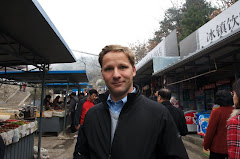Some call the late John Boyd the most original militarystrategist in 1,000 years. True or not, his influence has been profound. His ideas about “maneuverability” as the sine qua non of military effectiveness, long on the back burner (during the Cold War standoff between
sluggish behemoths), have marched front and center in the new age of instability, ambiguity, and terrorism. At the heart of Boyd’s thinking is an idea labeled “OODA Loops.”OODA stands for the Observe-Orient-Decide-Act cycle. In short, the player with the quickest OODA Loops disorients the enemy to an extreme degree. In the world of aerial combat, for example, the confused adversary subjected to an opponent with short OODA cycles often flies into the ground rather than becoming the victim of machine gun fire or a missile. Boyd is careful to distinguish between raw speed and maneuverability. In aerial dogfighting in Korea (Boyd’s incubator), Soviet MiGs flown by Chinese pilots were faster and could climb higher, but our F-86 had “faster transients”—it could change direction more quickly; hence our technically inferior craft (by conventional design standards) achieved a 10:1 kill ratio.
(Read more in Robert Coram’s Boyd: The Fighter Pilot Who Changed the Art of War.)
This blog captures notes, thoughts and ideas of Tobias Wessels from Germany who graduated in May 2000 with a Masters in Economics from the University of Fribourg, Switzerland. Tobias worked in the financial services industry, two Start-ups and Venture Capital. He was awarded the Chartered Financial Analyst (CFA) designation in 2005. After earning an MBA from the Darden Graduate School of Business in 2007 he moved to Silicon Valley where he works as a Financial planner in a technology company.
The author

About Me

- Tobias C. Wessels, CFA
- San Jose, CA, United States
- I'm responsible for the Capital Expenditure planning and special projects at Google.
My pictures on Picasa
Call me!
Labels
- Pictures (27)
- strategy (18)
- Psychology (17)
- advice (12)
- Quote (9)
- tactic (8)
- negotiation (7)
- Privat (5)
- networking (3)
- operations (3)
- Graduation (2)
- Videos (2)
- evolution (2)
- leadership (2)
- start-up (2)
- MBA (1)
- finance (1)
- legal (1)
- newspaper (1)
Blog Archive
-
▼
2006
(102)
-
▼
July
(24)
- Playing for money
- Mozart on writing symphonies
- My dog
- Chinese proverbes
- Pareto Principle
- Quotes
- Riding the dead horse
- OODA
- Where's the bottleneck?
- How to sell to women
- Women = Opportunity No. 1
- Richard Branson on Strategy
- Have you invested as much this year in your career...
- People in China and India are starving for your job
- One Sad Dog can Infect a group of 100
- Build on them
- Chicken story
- 25.000 USD Consulting fee
- Tattoo Brands
- Negotiating
- Business Plan = Portfolio of experiments
- Chess player
- Nonmarket paradox
- Diclaimer
-
▼
July
(24)
No comments:
Post a Comment